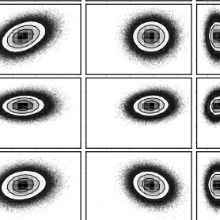New publication, published in MDPI Applied Sciences, on the topic of heat storage. Methods like Bayesian inference and surrogate models using Polynomial Chaos Expansion, developed and also applied in different contexts in SFB 1313 research project D03, were applied in this work to allow for (i) an objective model calibration in the context of experimental data that are difficult to interpret, and (ii) to successfully validate the model. This study was co-funded by the Boysen-Stiftung (BOY-141) and SFB 1313.
Authors
- Gabriele Seitz (Boysen research project BOY-141)
- Farid Mohammadi (SFB 1313 research project D03)
- Holger Class (SFB 1313 research project C04)
Abstract
Calcium oxide/Calcium hydroxide can be utilized as a reaction system for thermochemicalheat storage. It features a high storage capacity, is cheap, and does not involve major environmentalconcerns. Operationally, different fixed-bed reactor concepts can be distinguished; direct reactorare characterized by gas flow through the reactive bulk material, while in indirect reactors, the heat-carrying gas flow is separated from the bulk material. This study puts a focus on the indirectlyoperated fixed-bed reactor setup. The fluxes of the reaction fluid and the heat-carrying flow aredecoupled in order to overcome limitations due to heat conduction in the reactive bulk material.The fixed bed represents a porous medium where Darcy-type flow conditions can be assumed.Here, a numerical model for such a reactor concept is presented, which has been implemented inthe software DuMux. An attempt to calibrate and validate it with experimental results from theliterature is discussed in detail. This allows for the identification of a deficient insulation of theexperimental setup. Accordingly, heat-loss mechanisms are included in the model. However, it canbe shown that heat losses alone are not sufficient to explain the experimental results. It is evidentthat another effect plays a role here. Using Bayesian inference, this effect is identified as the reactionrate decreasing with progressing conversion of reactive material. The calibrated model reveals thatmore heat is lost over the reactor surface than transported in the heat transfer channel, which causesa considerable speed-up of the discharge reaction. An observed deceleration of the reaction rateat progressed conversion is attributed to the presence of agglomerates of the bulk material in thefixed bed. This retardation is represented phenomenologically by mofifying the reaction kinetics.After the calibration, the model is validated with a second set of experimental results. To speed upthe calculations for the calibration, the numerical model is replaced by a surrogate model based onPolynomial Chaos Expansion and Principal Component Analysis.
Contact

Gabriele Seitz
Dr. -Ing.Departure in June 2021

Farid Mohammadi
M.Sc.Doctoral Researcher, Research Project D03

Holger Class
apl. Prof. Dr. Ing.Principal Investigator, Research Project C04, Central Project Z


